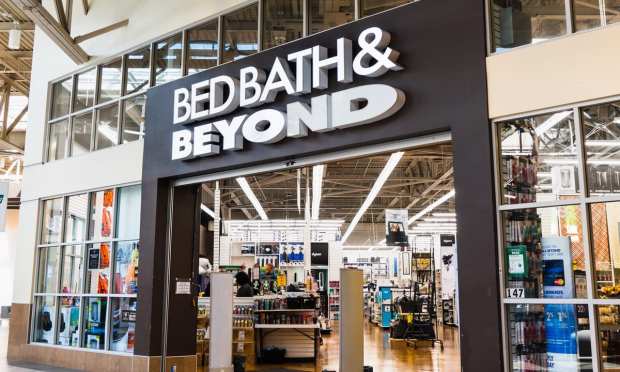Bed Bath & Beyond Nearly Doubles Digital Sales Even As Brick-And-Mortar Tanks

Bed Bath & Beyond reported Thursday (Jan. 7) that digital sales nearly doubled during the company’s fiscal third quarter even as overall sales fell 5 percent and the company lost more than $75 million.
“We knew this holiday season would be like no other, and we took several steps in advance to help our customers shop safely and with ease,” President and CEO Mark Tritton said in announcing the results.
He said changes included “over 100 meaningful improvements to our digital-first, omni-always customer experience, and enhancements to our contactless new store and curbside pickup and same-day delivery service offering. We are delighted by the strong customer response to these efforts. We are seeing a deepening level of recognition and engagement from our customers, including the more than 2 million new online customers in the third quarter.”
The company reported that comparable digital sales for Q3, which ended Nov. 28, rose 77 percent across all of the company’s brands, including 94 percent growth at its flagship Bed Bath & Beyond chain. Executives said the Bed Bath & Beyond brand added 2.2 million new online customers during the latest quarter and has gained some 7 million year to date.
Chief Digital Officer Rafeh Masood added on the company’s earnings call that the chain saw big growth in customer use of digital options like buy online, pick up in store (BOPIS). He said that while Bed Bath & Beyond promises to fulfill such orders within two hours, most tickets are actually ready within 30 minutes even though the chain only began offering BOPIS in May.
“With COVID as a headwind to our store traffic, we have stepped up our strategy as an omni-always [retailer],” Masood said. “We know omnichannel is the future of retail and we are making the right investments.”
For instance, he said the company’s recently relaunched Bed Bath & Beyond and Buy Buy Baby apps have already gotten some 800,000 downloads. Masood also said the company has added popular options for buy now, pay later options like Afterpay and PayPal’s “Pay in 4” option. Additionally, Bed Bath & Beyond has extended Apple Pay’s availability from in-store only to include the company’s mobile apps.
“Each of these initiatives were geared toward a goal of meeting customers where they are and providing multiple options payments and delivery,” Masood said. “It is a true revolution from where we were a year ago.”
Bed Bath & Beyond has ramped up digital offerings even as the chain plans to close some 200 underperforming brick-and-mortar stores. Bed Bath & Beyond is also disposing of some 340 additional sites by selling off five store brands, including Christmas Tree Shops and Cost Plus World Market.
Closures and a 15 percent drop in comparable-store sales drove Bed Bath & Beyond’s total store net sales down 17 percent during Q3. The 77 percent gain in comparable digital sales partly offset that, but the company’s overall net sales still fell 5 percent for the quarter to $2.6 billion.
All in, Bed Bath & Beyond lost $75.4 million during the period, doubling the $38.6 million in red ink reported in Q3 2019. The company also forecast that fiscal Q4 sales — which encompass most of the holiday shopping season — would fall by “a double-digit percentage range,” although it attributed some of that to store closures and divestitures.
The poor earnings and sales numbers disappointed Wall Street and sent Bed Bath & Beyond shares falling almost 9 percent to $9.16 on Thursday morning.